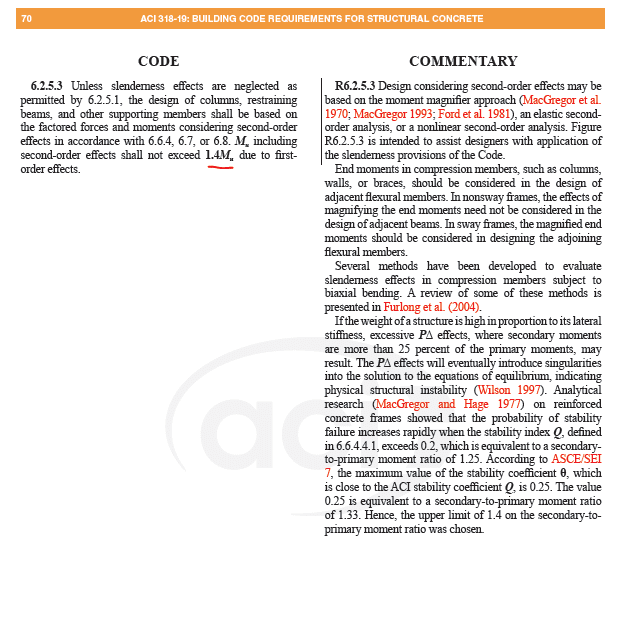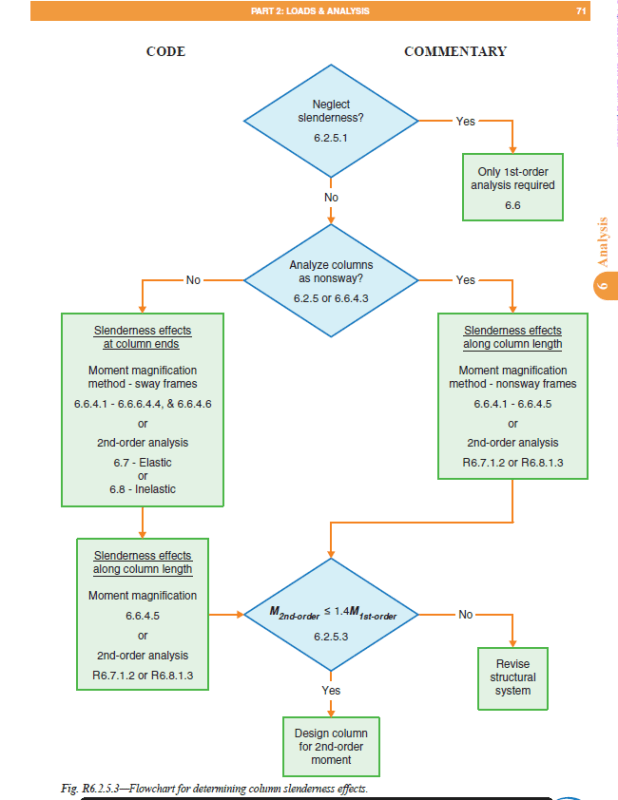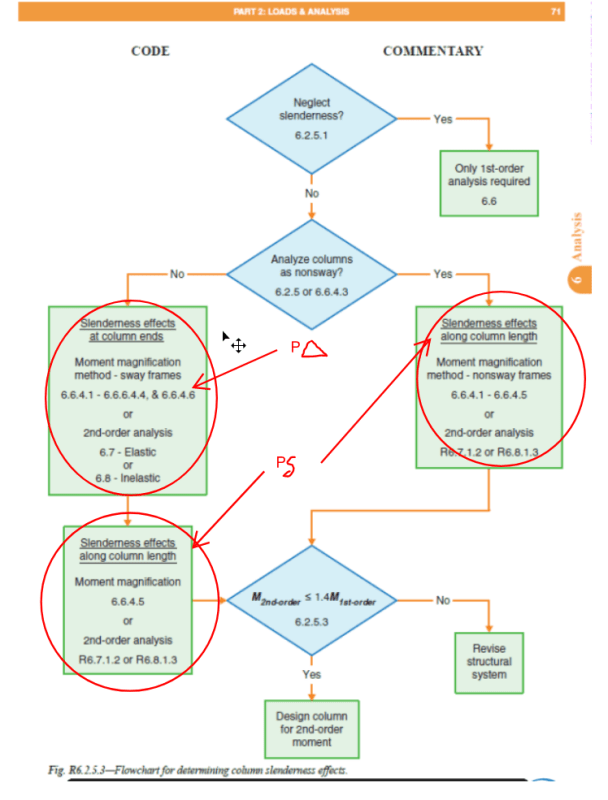Dear All
I am not clear on upper limit of1.4 on the second to primary moment ratio.
M[sub]2nd-order[/sub]=< 1.4M[sub]1st-order[/sub]. the question is which moment ( M[sub]2nd-order[/sub] (Pdelta(big))(Sideway only) or M[sub]2nd-order[/sub] (P delta(big)+delta(small))(Sideway+slenderness effect) )to compare with M[sub]1st-order[/sub]?
Thank you


I am not clear on upper limit of1.4 on the second to primary moment ratio.
M[sub]2nd-order[/sub]=< 1.4M[sub]1st-order[/sub]. the question is which moment ( M[sub]2nd-order[/sub] (Pdelta(big))(Sideway only) or M[sub]2nd-order[/sub] (P delta(big)+delta(small))(Sideway+slenderness effect) )to compare with M[sub]1st-order[/sub]?
Thank you



